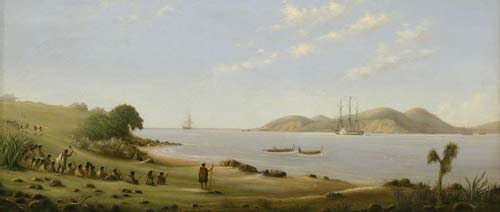
In 1839 William Hobson was appointed lieutenant-governor with instructions to establish British sovereignty over New Zealand. On 5 February 1840 at Waitangi, in the Bay of Islands, he discussed what would become known as the Treaty of Waitangi with a gathering of northern Māori chiefs, 43 of whom signed Te Tiriti the next day. Hobson’s emissaries subsequently travelled around the country and collected nearly 500 more signatures, nearly all of them to the text in te reo Māori, which acknowledged that Māori retained full authority over their lands and other tangible and intangible possessions. Hobson nevertheless proclaimed British sovereignty over the whole country while signatures were still being sought. This 1896 oil painting by Matthew Clayton is an imaginative portrayal of Hobson’s landing at Waitangi prior to the first signing ceremony.
Using this item
Auckland Art Gallery – Toi o Tāmaki
Reference:
1953/18
Oil painting by Matthew Clayton, 1896
Permission of Auckland Art Gallery Toi o Tāmaki must be obtained before any re-use of this image.









Add new comment